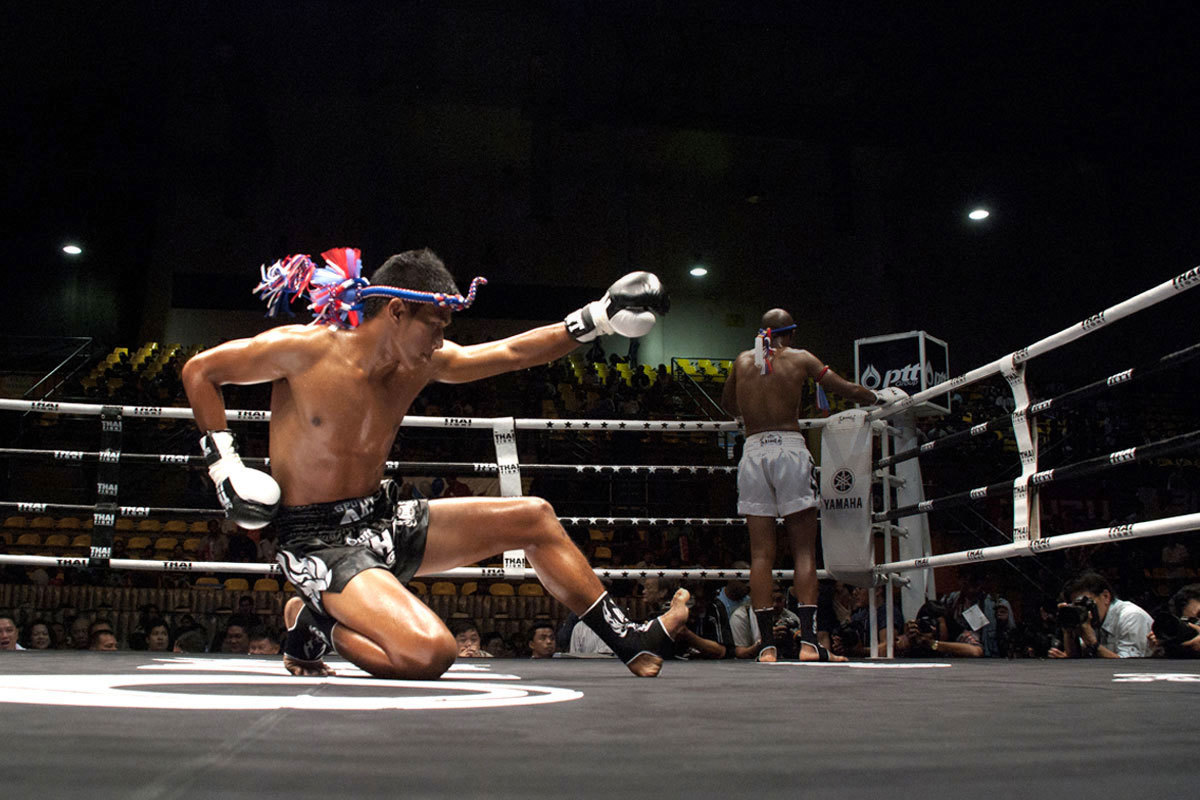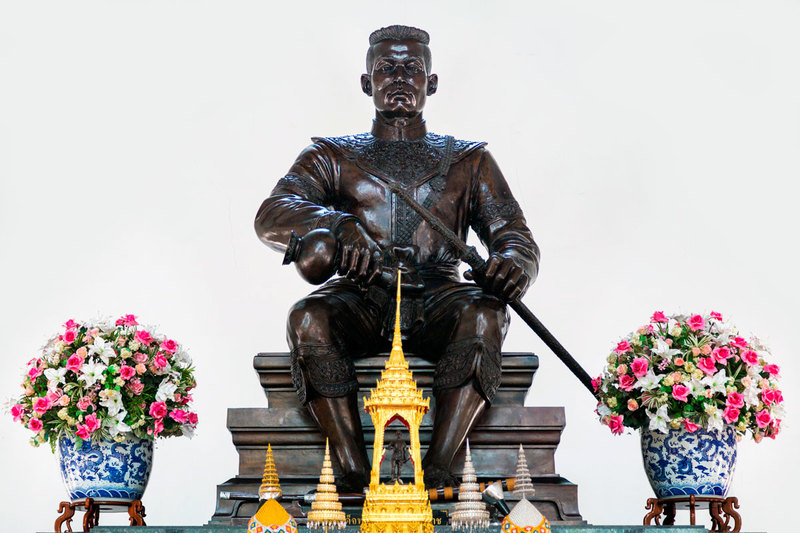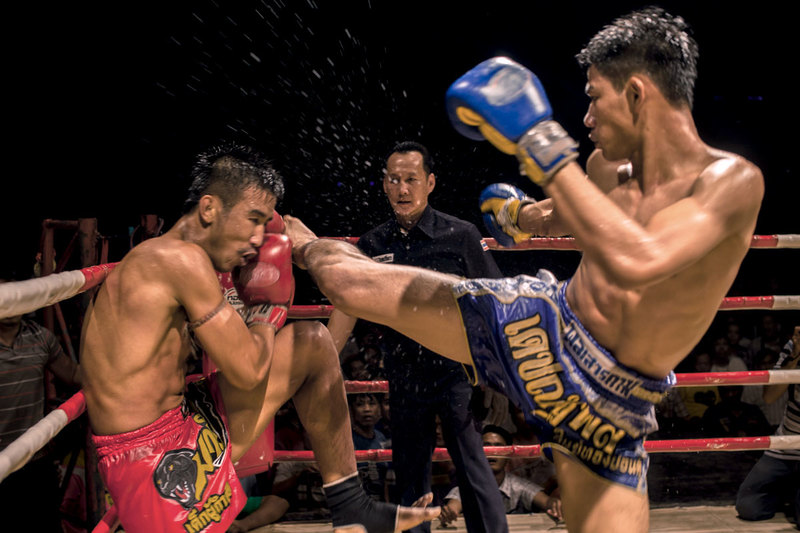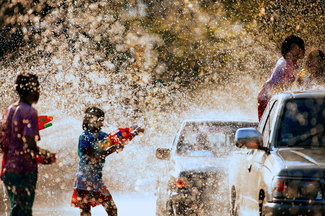MUAY THAI – THE ART OF EIGHT LIMBS

The origins of modern Muay Thai can be found on the battlefields of the countless conflicts between the Thais and their neighbours. Every country in Southeast Asia has its own version, Lethwei in Burma, Pradal Serey in Cambodia and Tomoi in Malaysia, all of which differ in matters of style but all equally effective and thoroughly battle tested, following the maxim of ‘win or die’.
The modern sport version of this ancient martial art has become one of the most popular and respected forms of martial entertainment in the world. Competitors from around the world come to Thailand in droves to train and compete in one of the world’s toughest and most demanding competitive sporting martial arts.
In times past, long forgotten martial heroes fought their way to glory and everlasting fame, and though their names for the most part may be lost to the ravages of time, the skills they honed and the expertise they developed live on in an unbroken tradition and undying love and respect for one of the most explosive and devastating forms of unarmed combat that practitioners and enthusiasts cherish to this day.
Throughout the various kingdoms of Thailand local champions fought gruelling grudge matches, in villages, towns and royal metropolises, and all for the glory and fame of victory. Warriors, soldiers of the king, members of the royal court and monarchs all competed in these vicious, no-holds-barred contests.
Much like in 18th and 19th century England where bare-knuckle boxing became enormously popular and enjoyed royal patronage, Muay Thai too was the favoured sport of kings and nobles. King Naresuan (reigned 1590-1605), who liberated the Kingdom of Ayutthaya from Burmese control, was a notable practitioner of the art and made strenuous efforts to promote the martial art throughout the country and it is probably around this time that its sporting application became enormously popular.
 King Naresuan, national hero and Muay Thai practioner
King Naresuan, national hero and Muay Thai practioner
King Prachao Sua (reigned 1702-1709), known as the ‘Tiger King’ became a legend in Muay Thai. A powerful, charismatic man with a volcanic temper and ferocious fighting style, he must have given many an opponent serious pre-match jitters. So great was his passion for this martial art he would enter contests incognito and fight at village Muay Thai tournaments, on one occasion defeating two local champions in successive bouts, for which he received two Baht in prize money. He left the ring with his real identity still unknown to the audience. Had any of his challengers suspected who he was none would have dared fight their king.
In these bouts there were few of the rules seen in the modern version of the sport. There were no weight categories or timed rounds and fights continued until a clear winner emerged. Fighters used rough hemp rope wound around their hands and forearms, starched to harden the outer surface, which allowed for much greater impact damage. In time professional fighters emerged and tournaments were arranged at villages and towns throughout the country. Local styles developed, each with its distinctive array of techniques, and this regional bias added extra spice to the already potent and highly volatile atmosphere of nationally staged tournaments.
Much like today, huge amounts were wagered on the outcome of fights, tempers often flared out of control and quite often utter pandemonium would ensue. But, the sporting version of the art became enormously popular across the country and eventually international contests were organized, most often against their long-time enemy on the battlefield, the Burmese.
One famous encounter in 1774 involved the legendary Nai Khanom Tom, who while a prisoner of war was made to fight as part of the entertainment put on for the Burmese king. In ten consecutive fights Nai Khanom Tom defeated each of his Burmese opponents, earning him the king’s respect and his liberation.
King Rama I (reigned 1782-1809) was another keen enthusiast and travelled widely around the country to watch local champions compete. In 1788 two French brothers came to Thailand with the intention of challenging Thai champions in the ring. One of the brothers had something of a reputation and had fought frequently and successfully across Europe. The king agreed, after consulting his head of the Royal Boxing Ministry, to stage the fight at the Grand Palace, at the Temple of the Emerald Buddha, with a substantial cash prize for the winner.
Initially the larger and stronger Frenchman had the upper hand, but began to tire in the latter stages of the fight and as his Thai opponent landed ever more punishing blows, the Frenchman’s brother entered the ring to offer his help, in obvious contravention of the rules. A minor riot ensued involving Thai palace guards, spectators, both local and foreign and a great number of disgruntled gamblers. The disgraced Frenchmen left the country very soon after.
During King Rama V’s reign (1868-1910) Muay Thai experienced something of a golden age. Large tournaments were held annually and boxing centres with royal patronage were established throughout the kingdom. The martial art’s prestige was at an all-time high. Muay Thai instruction became part of the national curriculum for military cadet teachers.
During the 1930s the sport became increasingly codified and regulated, with rules designed to make it an internationally accepted sport. Gloves, similar to those worn in European boxing, replaced the hemp rope of bygone years, rounds were introduced and weight categories established.
During World War II and the subsequent Vietnam War, many foreign servicemen were introduced to the sport and became avid fans, encouraging many to take up the sport in the West, where today it is among the most popular and most taught martial arts in Europe and the USA. Today it is without doubt Thailand’s most popular sport, with fights shown on TV four nights a week. They are fast, furious and spectacular and a visit to either Rajadamnern or Lumpinee stadiums in Bangkok can be quite an experience.
Sarama is the name of the typically discordant, strident music that accompanies a Muay Thai fight as well as the pre-match ritual, the Wai Khru Ra Muay, (‘Boxing Dance to Salute the Teacher’), when the fighter performs a dance to acknowledge the training he’s received from his Khru (from Sanskrit ‘Guru’), his Muay Thai teacher. On entering the ring the fighters move in an anti-clockwise fashion, pausing at each corner to pray. They then perform the Ram Muay, the movements of which are said to imitate those of Hanuman, the monkey god, hero of the Ramayana.
The music’s tempo reflects the intensity of the action, often rising to fever pitch, adding to the singularly unique atmosphere of a Muay Thai bout. It’s not to everyone’s tastes and strikingly different to Western musical tastes, but its ancestry goes back centuries to when discordance, rather than serenity, was the norm of everyday life.

Sadly, unlike boxers in Europe and the USA, Muay Thai fighters make little money from their endeavours, despite often fighting every three to four weeks, a schedule that would be unthinkable in the West. Training is long, intensive and extremely arduous, and fighters often begin their training from the age of six to eight and will very often have their first serious fight at around eight to ten years old. Most will have fought more than 150 times before they have reached the twenties, but their careers never last very long due to the high degree of fitness that is required and the toll constant fighting takes on the body.
Quite often at boxing arenas located in bars in tourist areas across Thailand members of the audience are invited to step into the ring with an ex-champ, now retired, and eking out a living offering glimpses of his former, formidable prowess. But don’t be fooled by his diminutive stature or the sometimes lacklustre show he puts on for the largely disinterested and ill-informed crowd.
You can entertain your friends and experience what it feels like to take a toned-down punch, a slowed-down kick to the head, neither of which you will see, let alone manage to block. But remember this. You are dancing with a tiger. You may try your luck but don’t be tempted to push it too far - two fists, two elbows, two knees, two feet are far too many for mere mortals to contend with.










of collaborative energy




Before proceeding to use the website please carefully ready our Terms and Policies
I accept Diwerent's Terms and Conditions and Privacy Policy













